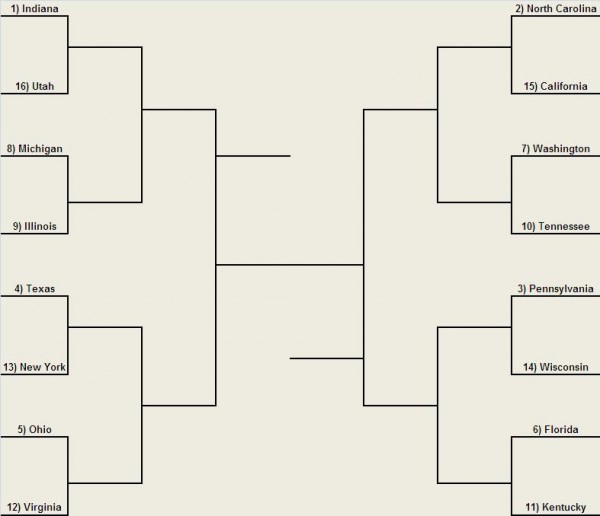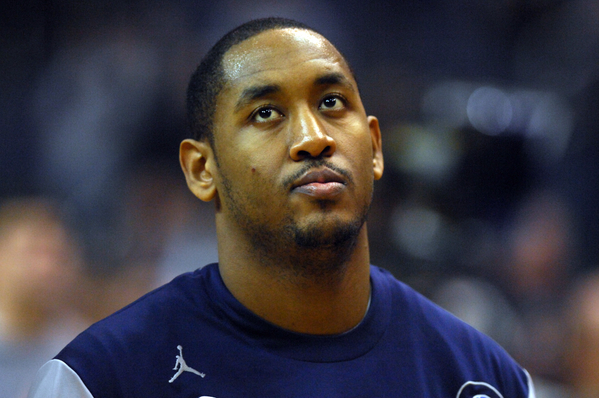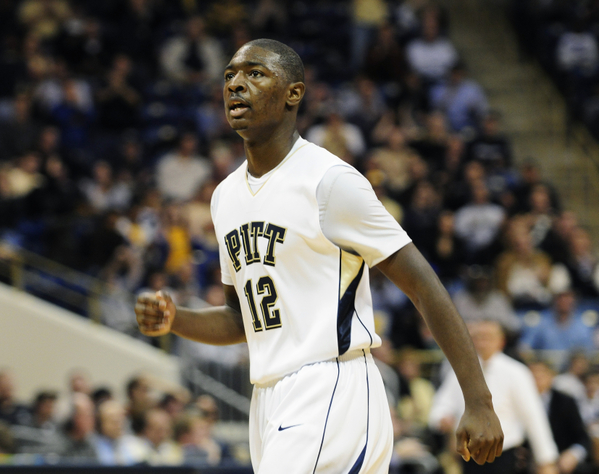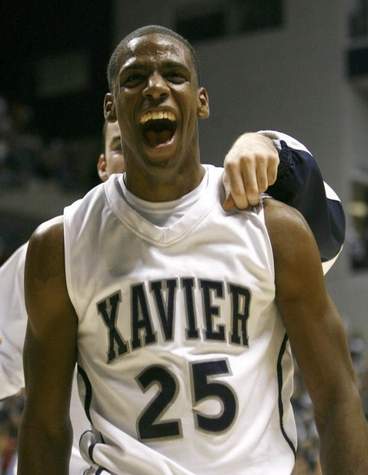
Rob Dauster of Ballin is a Habit is the RTC correspondent for the Big East Conference.
It has been a long time since there was a good college basketball team in the NYC metro area. Unless you consider Storrs, CT, in the NYC metro area.
This season was supposed to be different. Seton Hall had added transfers Herb Pope, Jamel Jackson, Jeff Robinson, and Keon Lawrence to a solid core. St. John’s was bringing everyone back, including one of the most underrated players in the league in DJ Kennedy. Rutgers lost Corey Chandler, but with Mike Rosario returning alongside Gregory Echinique and Hamady Ndiaye, the Scarlet Knights were expected to be much more competitive in the league.
The non-conference season seemed promising. They combined to go 28-7 before the Big East season, which included wins over Temple, Siena, and Cornell, three teams that could very well be playing in the Tournament. Hell, it seemed like both the Pirates and the Johnnies had a good shot at making a run to the Dance.
But a week into league play, these teams have yet to win a game, going 0-5. What’s worse is that four of those five losses have come at home. So what happened?
For starters, injuries have played a big role. St. John’s is just getting Justin Burrell back after a sprained ankle held him out for a couple weeks, and still hasn’t had Anthony Mason, Jr., who is battling hamstring problems. Rutgers lost Gregory Echinique for the season to an eye injury. And if you look closer, four of those five losses came against teams that look destined to be dancing. In each of those four games, the loser wasn’t blown out as much as outlasted.
But the bigger issue may a bit more subtle. You see, winning is a skill; a learned trait. It takes experience, it takes leadership, and it takes smarts. It’s the ability to understand time and score, knowing when to step on the gas and when to rein it in offensively and run some clock. Its knowing what is a good shot, and the ability to run your offensive sets and get those good shots.
After watching any (or all) of these games, do you believe that Seton Hall, St. John’s, or Rutgers knows how to win a close game?
I don’t. Can the same be said for Marquette?
The Golden Eagles were written off by a lot of people before the season started, but after an impressive showing at the Old Spice Classic in Orlando, it seemed like Buzz Williams’ team might be better than some of us thought. But Marquette has had just as much trouble in close games. They are currently sitting at 9-5 on the season, losing those five games by a combined 17 points, three of which came on the final possession. Two of those losses came in Marquette’s first two Big East games, as Da’Sean Butler and Scottie Reynolds both hit game-winners in the final seconds.
What does this all mean?
Well, what we know for sure is that Marquette is much better than expected, Seton Hall has a ton of talent, and that St. John’s is good (they beat Temple in Philly, and regardless of what Kansas did on Saturday, beating this Temple team in Philly is impressive) and will only get better when Mason returns.
Maybe this says more about the Big East conference as a whole than anything about a specific team. Maybe this proves what we expected – that the Big East is incredibly balanced this season. Maybe this shows us that the difference between finishing 12-6 and 6-12 in the league, the difference between making the Tournament and heading to the NIT, isn’t a matter of talent. Its a matter of leadership, of experience, of smarts.
Maybe the difference is simply having guys that know how to win these close games.
Other Notes
-
Of the 16 teams in this conference, there are only three that I am ready to write off: Providence, Rutgers and DePaul. One team that you may notice missing from that list is South Florida. Yes, the Bulls have started Big East play 0-2. No, the Bulls don’t have many impressive wins this season (their best are UVa and San Diego). But keep in mind that Stan Heath’s club is currently missing two of their best players – Gus Gilchrist, their leading scorer who has missed the last six games and will be out for about another month with a severely sprained ankle, and Anthony Crater, an Ohio State transfer that was suspended after he became eligible in mid-December. The Bulls are not a deep team – without Crater and Gilchrist they basically go five deep – but a seven man rotation headlined by Crater, Gilchrist, Jarrid Famous and Dominique Jones, one of the best kept secrets in the country, the Bulls will make a lot of believers.
-
UConn might be the best team in the conference in transition. Kemba Walker can lead the break as well as anyone, Stanley Robinson may be the best in the country at finishing above the rim, and Jerome Dyson attacks the rim like a running back hitting the hole on third and short. That said, where UConn will struggle is in the halfcourt until Walker learns how to run a team and an offense. Far too often, the Huskies pass the ball around the perimeter for 30 seconds, ending a possession with a headlong drive at the rim. UConn had the same problem last season, but AJ Price was excellent at taking the ball with 10 seconds on the shot clock, beating his defender, and either finding a big man at the rim or setting up an iso on the wing. Walker can’t do that. He also hasn’t developed Price’s best shot – the 10 foot pull-up. Walker isn’t going to be finishing at the rim against a set defense in this league, but he is quick enough to get into the paint any time he wants. Until Walker becomes the on-court leader that Price was, the Huskies will continue to struggle.
-
Another UConn note: has Gavin Edwards been the most surprising player in the conference this year? Probably not, but there are few that have impressed more people than Edwards. He is the Huskies’ only real threat to score in the post on anything other than a catch-and-dunk, he rebounds the ball well, he plays smart defense, and he doesn’t make mistakes. Hell, he has played well enough to garner attention from the NBA. I guarantee not one person thought this kid had a shot at the league after his first two seasons.
-
West Virginia’s point guard issues were exposed by Pitt. They couldn’t run any offense in the second half, committed far too many live-ball turnovers, and as a result dug themselves into a big hole as Purdue got layup after layup. But we knew that was going to happen as the Mountaineers dealt with injuries to Truck Bryant and Joe Mazzulla. The bigger concern may have been on the glass. Granted, there are few teams in the country as adept at boxing out as the Boilermakers, but WVU still managed just seven offensive rebounds. With how much this team struggles in the halfcourt offensively, they aren’t going to win many games without easy second-chance points.
-
We’ll talk about Pitt in a bit, but if you’re a Cuse fan, don’t read all that much into the loss to Pitt. I guarantee that Jim Boeheim will put a stop to that lackadaisical defense very quickly, and there won’t be too many games where the Orange goes 1-13 from deep while their opponents shoot 10-24.
PLAYER OF THE WEEK: Ashton Gibbs, Pitt. Pitt thrust themselves back into the Big East conversation with wins over Syracuse and Cincinnati this week. (Oh, and should I mention they were both on the road? Well, they were.) And Gibbs was the biggest reason why, averaging 21.5 ppg. He wasn’t just scoring points either, he was scoring important points. Against the Orange, he knocked down a number of big threes in the second half as the oft-scoring-deficient Panthers posted 53 points to overtake the Cuse. In the Cincy game, Gibbs hit the important free throws down the stretch as the Bearcats were trying to mount a comeback. With Jermaine Dixon and Gilbert Brown back for the Panthers, this team has a number of weapons on the perimeter and is playing as well as any Jamie Dixon-coached team has. But it is Gibbs’ leadership and scoring ability that is going to determine how far this team goes. When he’s efficient, they are good. When he isn’t, just go back and rewatch the Indiana loss to see what happens.
TEAM OF THE WEEK: Pittsburgh Panthers. I don’t like doing this. I don’t like giving the POTW and the TOTW awards to the same program. But who else deserves this? Georgetown went 2-0 this week, but beating St. John’s at home and DePaul shouldn’t get you a TOTW. Villanova won at Marquette, but is that anywhere near as impressive as Pitt winning at Syracuse and Cincinnati? West Virginia and Louisville both lost marquee non-conference games. Everyone else had a loss during the week. Marquette was two good defensive possessions away from being 2-0 with wins over two of the Big East favorites, but as it stands they went 0-2 on the week. Which leaves us with Pitt. In the paragraph above, you already learned about Pitt’s two impressive road wins. Perhaps the key for the Panthers this week was their two mid-season additions. Jermaine Dixon scored 21 big points against Syracuse, while Gilbert Brown had 13 of his 17 points in the second half to hep the Panthers pull away from Cincy. What this means is that Pitt now has four or five legitimate scoring threats on their perimeter. While neither Dante Taylor, Nasir Robinson or Gary McGhee will be confused with an offensive force in the paint, the three provide toughness, defense, and the ability to finish at the rim. All of a sudden, the Panthers have enough offensive firepower to allow them win games with their defense. Is this just a flash in the pan, or is Pitt for real? I’m leaning towards the latter after this week.
POWER RANKINGS
1. Syracuse: 13-1, 1-1
Last Week: 1/2 vs. Pitt 72-82
This Week: 1/6 vs. Memphis, 1/10 vs. South Florida
2. Villanova: 12-1, 1-0
Last Week: 1/2 @ Marquette 74-72
This Week: 1/6 vs. DePaul, 1/9 vs. Marquette
3. West Virginia: 11-1, 2-0
Last Week: 1/1 @ Purdue 62-77
This Week: 1/6 vs. Rutgers, 1/9 @ Notre Dame
4. Pitt: 13-2, 3-0
Last Week: 1/2 @ Syracuse 82-72, 1/4 @ Cincinnati 74-71
This Week: N/A
5. Georgetown: 11-1, 2-0
Last Week: 12/31 vs. St. John’s 66-59, 1/3 @ DePaul 67-50
This Week: 1/6 @ Marquette, 1/9 vs. UConn
6. UConn: 10-3, 1-1
Last Week: 12/30 @ Cinci 69-71, 1/2 vs. Notre Dame 82-70
This Week: 1/6 vs. Seton Hall, 1/9 @ Georgetown
7. Cincinnati: 10-4, 2-1
Last Week: 12/30 vs. UConn 71-69, 1/2 @ Rutgers 65-58, 1/4 vs. Pitt 71-74
This Week: 1/6 vs. Cal St. Bakersfield, 1/9 @ Seton Hall
8. Louisville: 10-4, 0-1
Last Week: 12/30 vs. South Florida 73-52, 1/2 @ Kentucky 62-71
This Week: 1/6 @ Providence, 1.9 vs. St. John’s
9. Marquette: 9-5, 0-2
Last Week: 1/2 vs. Villanova 72-74
This Week: 1/6 vs. Georgetown, 1/9 @ Villanova
10. Notre Dame: 13-3, 2-1
Last Week: 12/30 vs. Providence 93-78, 1/2 @ UConn 70-82, 1/5 vs. South Florida 74-73
This Week: 1/9 vs. West Virginia
11. South Florida: 10-4, 0-2
Last Week: 12/30 @ Louisville 52-73, 1/5 vs. Notre Dame 73-74
This Week: 1/10 @ Syracuse
12. St. John’s: 10-4, 0-2
Last Week: 12/31 @ Georgetown 59-66, 1/3 vs. Providence 74-59
This Week: 1/9 @ Louisville
13. Seton Hall: 9-4, 0-2
Last Week: 1/2 vs. Virginia Tech 94-103 OT
This Week: 1/6 @ UConn, 1/9 vs. Cincinnati
14. Providence: 9-5, 1-1
Last Week: 12/30 @ Notre Dame 78-93, 1/2 @ St. John’s 74-59
This Week: 1/6 vs. Louisville, 1/9 vs. Rutgers
15. Rutgers: 9-4, 0-1
Last Week: 1/2 vs. Cincinnati 58-65
This Week: 1/6 @ West Virginia, 1/9 @ Providence
16. DePaul: 7-7, 0-2
Last Week: 1/3 vs. Georgetown 50-67
This Week: 1/6 @ Villanova


















































